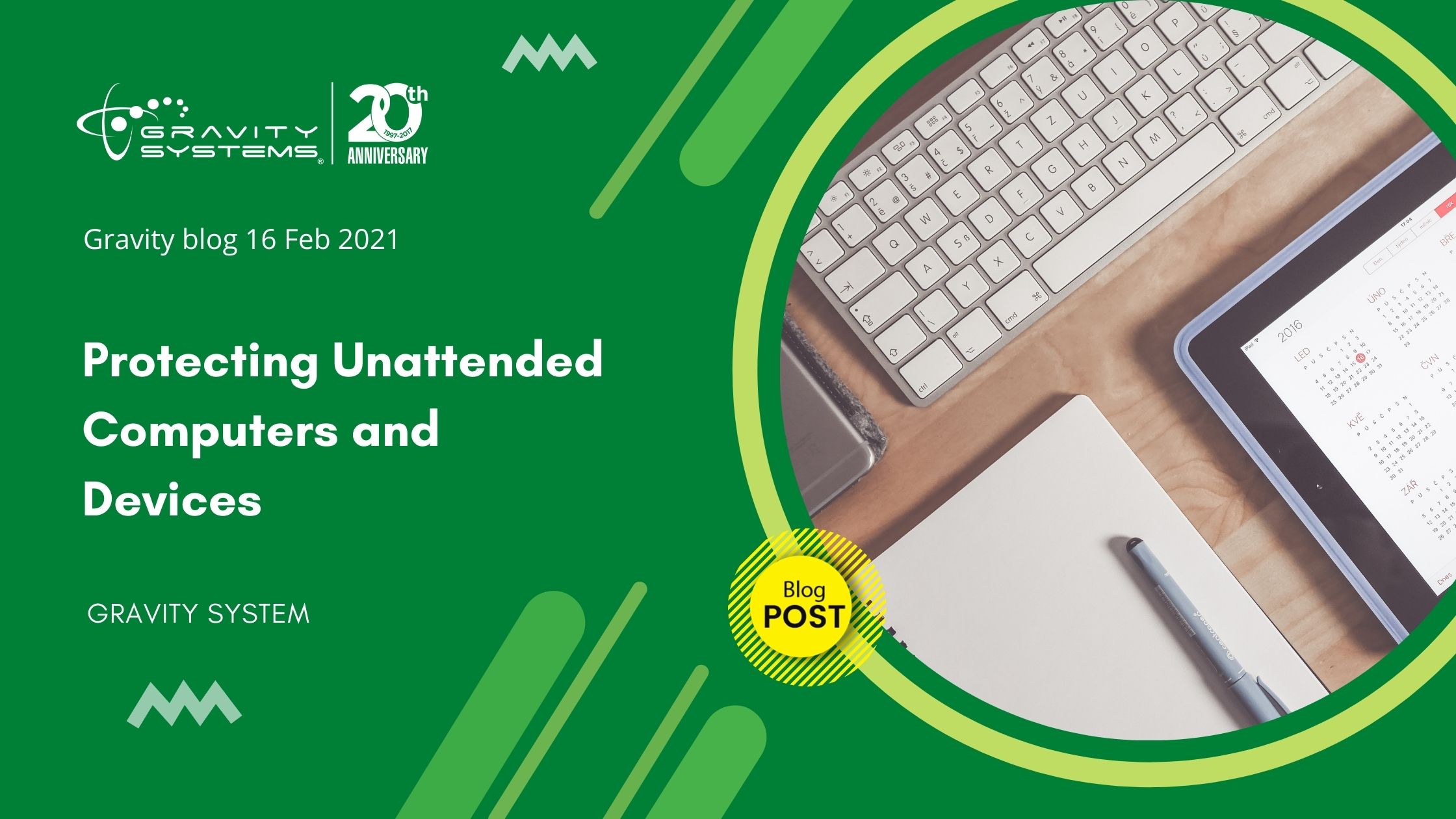It’s a common situation that never fails to sting: You leave your laptop or smartphone unguarded for just a brief moment, only to find that it has magically disappeared from the public table or desk where you’d left it. Or maybe you could’ve sworn that you’d kept the device in question
with you at all times, only now you have no clue where it’s gone. In addition to loss of some expensive equipment, you may also face the prospect of a serious security breach once an unauthorized party has your hardware. Here are some tips on how to protect yourself from that
worse-case scenario, courtesy of your Austin business tech support team at Gravity Systems.
.jpg?width=1920&name=Security%20update%20by%20Microsoft%20(10).jpg)
Use a Kensington lock. That little slot with the lock icon on your computer accommodates a special type of device called a Kensington lock. This lock typically includes a sturdy metal cable that you can loop around a table leg or other heavy object. Locking a device down in this
manner won’t deter a serious burglar with serious tools, but it can prevent a quick grab-and-run incident at a coffee shop or library.
Use password protection. Even a solidly secured computer can yield precious data to unscrupulous passersby. That’s why you need to lock out unauthorized users by employing password protection. The most comprehensive strategy involves locking the initial login screen
with a complex password.
Use built-in smartphone protection. Of course you’ll want to use password protection, fingerprint recognition, or other means of barring unauthorized usage on employees’ smartphones as well as their computers. But kill switches offer another critical form of data
protection. When you set up your company smartphones with the right remote locate-and-erase settings, you’ll be able to wipe a lost or stolen smartphone’s data, rendering it useless to the bad guys.
Want more tips? Contact us today!




